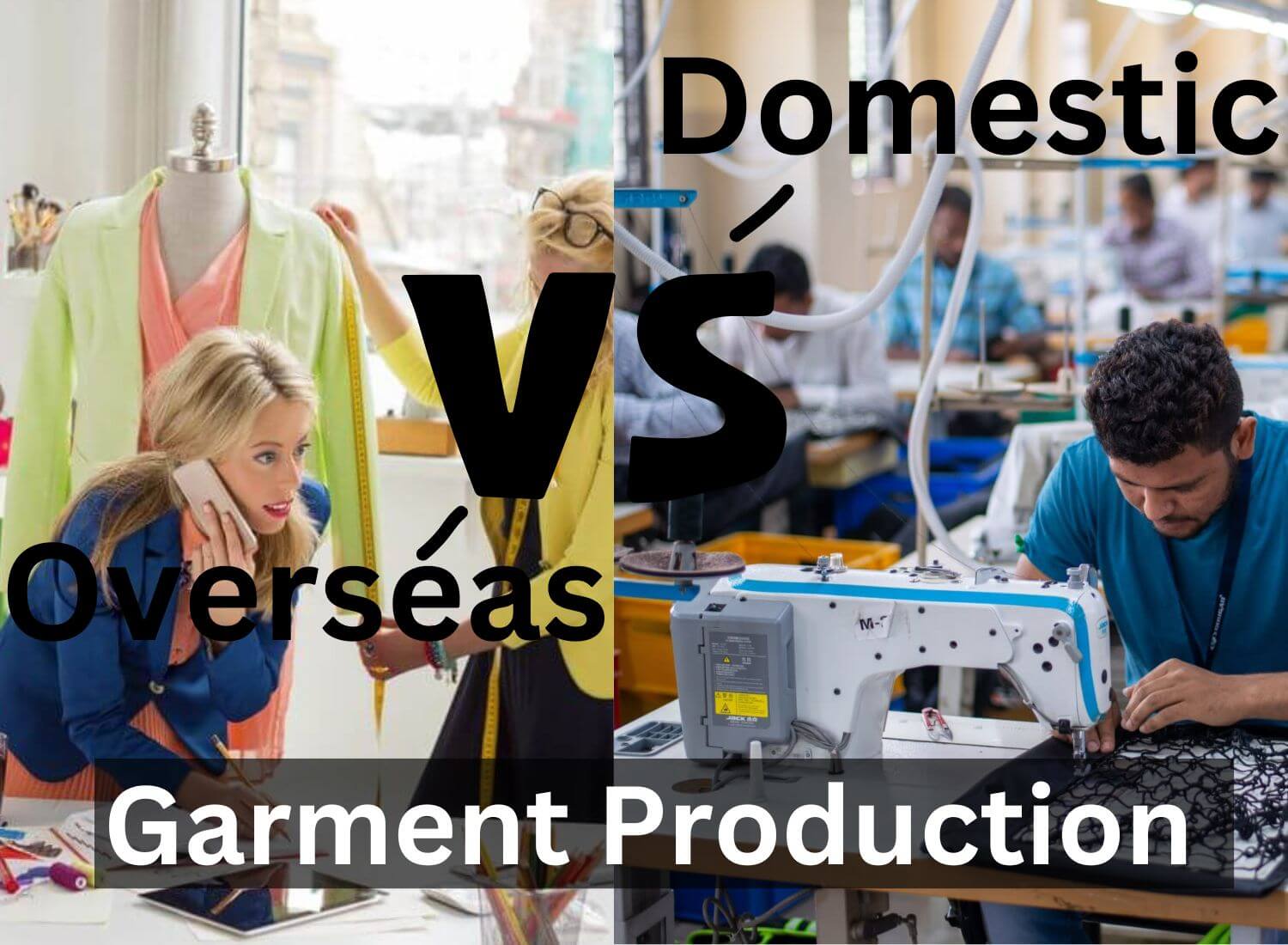In the fast-paced and ever-evolving fashion industry, garment production plays a critical role in bringing designs to life and satisfying consumer demand. When it comes to garment production, fashion businesses are faced with a crucial decision: whether to choose overseas or domestic production. This decision has significant implications that impact cost efficiency, quality control, communication, supply chain management, ethical considerations, market trends, and economic factors. By delving deeper into the pros and cons of each approach, fashion businesses can make informed decisions that align with their objectives, meet customer expectations, and position themselves for success in the competitive fashion landscape.
I. Cost Factors:
Cost considerations are at the forefront when weighing overseas and domestic garment production options. Overseas production often offers the advantage of lower labor costs due to wage differences between countries. This can result in reduced production expenses and potentially lower product prices.
However, it is important to consider additional expenses such as shipping, customs, and logistics. Overseas production involves longer supply chains, which can lead to extended lead times and potential challenges in managing the flow of goods.

On the other hand, domestic production may have higher labor costs due to local wage standards, but it allows for easier oversight of production processes and reduced logistics costs. Evaluating the overall cost structure is crucial to make a well-informed decision.
II. Quality Control:
Maintaining consistent quality is vital for building a reputable brand and satisfying customer expectations. Overseas production can present challenges in terms of quality control due to geographical distance, cultural differences, and language barriers.
Remote oversight and communication difficulties may lead to misinterpretations or variations in product quality. In contrast, domestic production provides greater control over quality assurance. Manufacturers directly oversee production processes, enabling them to closely monitor quality standards, identify and address issues promptly, and maintain consistent product quality.

This hands-on approach allows for higher quality control, resulting in garments that meet or exceed customer expectations.
III. Communication and Collaboration:
Effective communication and collaboration are essential for successful garment production. Overseas production can pose challenges in communication due to time zone differences, language barriers, and cultural nuances. These factors can hinder the efficient exchange of information, decision-making, and problem-solving.
Conversely, domestic production offers the advantage of more accessible communication and collaboration. Manufacturers can directly engage with production teams, facilitating clear and timely communication, feedback, and adjustments.

This direct interaction streamlines the production process, reduces the risk of miscommunication, and enables more efficient collaboration between all stakeholders.
IV. Supply Chain Efficiency:
Efficient supply chain management is critical to mymedic.es meet production timelines and deliver garments to the market promptly. Overseas production often involves long lead times due to international shipping and customs procedures. Delays or disruptions in the supply chain can hinder the ability to respond quickly to market demands and trends.
In contrast, domestic production offers shorter lead times and faster turnaround. Closer proximity to suppliers, reduced shipping distances, and streamlined logistics contribute to a more efficient supply chain.

This agility allows businesses to respond swiftly to changing market dynamics, fulfill orders promptly, and capitalize on emerging opportunities.
V. Ethical and Sustainable Practices:
Ethical considerations and sustainable practices are increasingly important in the fashion industry. Overseas production may raise concerns regarding labor rights, fair wages, working conditions, and environmental sustainability. Offshore manufacturing facilities may not always adhere to the same ethical and environmental standards as those enforced domestically.
In contrast, domestic production provides an opportunity to prioritize ethical and sustainable practices. It allows businesses to ensure fair working conditions, support local labor, reduce the carbon footprint through shorter transportation distances, and maintain transparency in the supply chain.

By opting for domestic production, fashion businesses can align with their values and cater to the growing demand for ethically and sustainably produced garments.
VI. Market Trends and Consumer Perception:
Understanding market trends and consumer perception is essential for successful garment production strategies. Some consumers place a strong emphasis on products labeled “Made in” their own country, associating domestic production with quality, craftsmanship, and supporting local industries.
This consumer segment values transparency, economic support, and the preservation of local manufacturing traditions. However, other consumers prioritize affordability and may be more accepting of overseas production due to lower price points. Fashion businesses must conduct thorough market research, analyze consumer preferences, and consider their target audience when deciding between overseas and domestic production.

Adapting production strategies to align with changing consumer perceptions is key to maintaining a competitive canaltaronja.cat edge in the market.
VII. Economic Impact:
The decision between overseas and domestic production carries economic implications at both global and local levels. Offshore production can contribute to job opportunities and economic growth in foreign markets. However, it may impact domestic job opportunities and local economies as manufacturing jobs are outsourced.
In contrast, domestic production supports local labor, stimulates economic growth, and fosters community development. By choosing domestic production, fashion businesses can play an active role in job creation, contribute to the economic well-being of their communities, and forge stronger connections with local suppliers and stakeholders.l

Conclusion:
The decision between overseas and domestic garment production is multi-faceted and requires careful consideration of various factors. While overseas production may offer cost advantages and access to a broader range of resources, it can pose challenges in terms of quality control, communication, and supply chain efficiency.
On the other hand, domestic production allows for better quality control, easier communication and collaboration, faster supply chain turnaround, and a stronger alignment with ethical and sustainable practices. Striking the right balance between overseas and domestic production involves evaluating both short-term cost efficiencies and long-term sustainability goals.
By making informed decisions, fashion businesses can navigate the complexities of the global fashion landscape, ensure the production of high-quality garments, meet customer expectations, and contribute to a more responsible and resilient industry.


